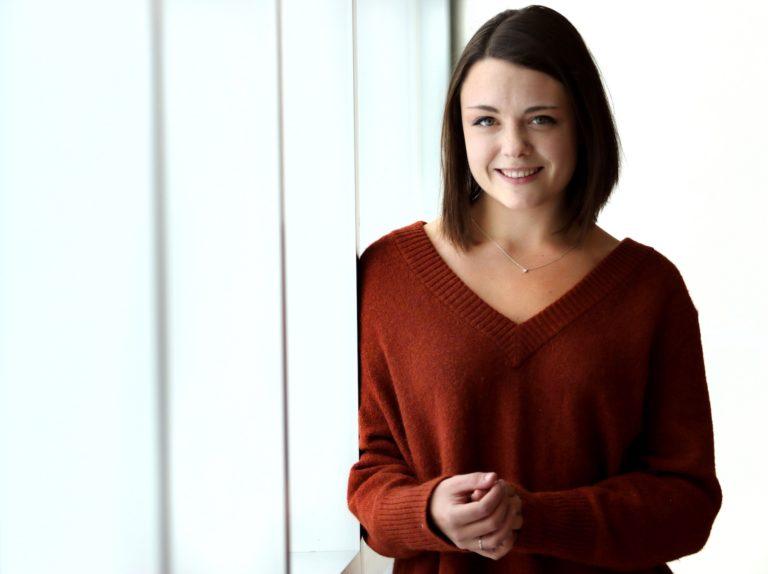2 Minutes With … is a series of short features to introduce us to the passions and interests of Lawrence students on and off campus.
Math and music may seem like two distinct subjects with no significant correlation. Not true, and Martha Strawbridge ’20 is trying to change that narrative, highlighting the ways in which mathematics and music can be used to understand each other.
“I’ve been playing saxophone since I was in sixth grade, so I’ve had a lot of time on the performance side,” the Lawrence University senior said. “When I came [to Lawrence], I wanted to become a jazz saxophonist.”
Strawbridge, from Longmont, Colorado, came in as a saxophone performance major, and while taking classes in both the Conservatory of Music and the college, she grew increasingly interested in mathematics.
“I knew I liked math in high school, but I took a calculus class here and I loved it so much that after my freshman year I decided to become a math major,” she said.
Strawbridge continues to be part of the Conservatory as a saxophone performance minor. She also creates big band compositions with Patty Darling, director of the Lawrence University Jazz Ensemble and a jazz professor.
“It wasn’t so much I wanted to switch; I just wanted to start doing more math and still kind of pursue music,” Strawbridge said. “It was more that I wasn’t as interested in performing.”
A perfect combo
She found a way to combine her two interests last year when she attended a mathematics symposium where professors were presenting research they had been working on. Lawrence mathematics professor Alan Parks presented his research on mathematical music theory, studying ways in which math and music inform and influence each other.
After the symposium, Strawbridge applied to conduct research with Parks.
“It worked out really well, and he and I already knew each other from classes and some independent studies,” Strawbridge said. “So, I applied, and he knew I was really interested in music and math, so it was kind of like a natural match.”
In tune with research
With a grant in hand to support women in science and math, Strawbridge was able to conduct research in mathematical music theory over the summer.
“It was an interesting process figuring out what we were going to research,” she said. “Professor Parks is a musician, too. So, we were wondering if it was going to become like music theory, analyzing scores and depicting them mathematically. Or if it was going to be really math heavy. A lot of time it was just both of us reading stuff that interested us.”
Mathematical music theory is a relatively new area of study.
“In the standard Western tuning system, you have 12 notes,” Strawbridge said. “[We tried to figure out] what are different ways we can imbed that into space that’s enlightening for people, or at least interesting?”
Next steps
Parks and Strawbridge are now working to get their research published in the Journal of Mathematics and Music. And Strawbridge has been selected to present her research in January in Denver at a joint meeting of the American Mathematical Society (AMS) and the Mathematical Association of America (MAA).
“I’m presenting the poster that I made,” Strawbridge said. “It will be very cool to explain what I was doing. It’s really fun.”
While that audience will be with people steeped in mathematics, Strawbridge said she also loves explaining the connections between music and math to people who aren’t necessarily involved heavily in either.
“I feel like math and music are both like, ‘oooh, music or math, I can’t do either of those,’ and it’s, like, ‘Well, I can talk to you about these ideas and you can understand more than you think you would.’ I think that was a really fulfilling aspect of our research, too.”
Martha Strawbridge
Class Year: 2020
Major: Math
Hometown: Longmont, Colo.
Activities: Saxophone Performance, Big Band Composition



